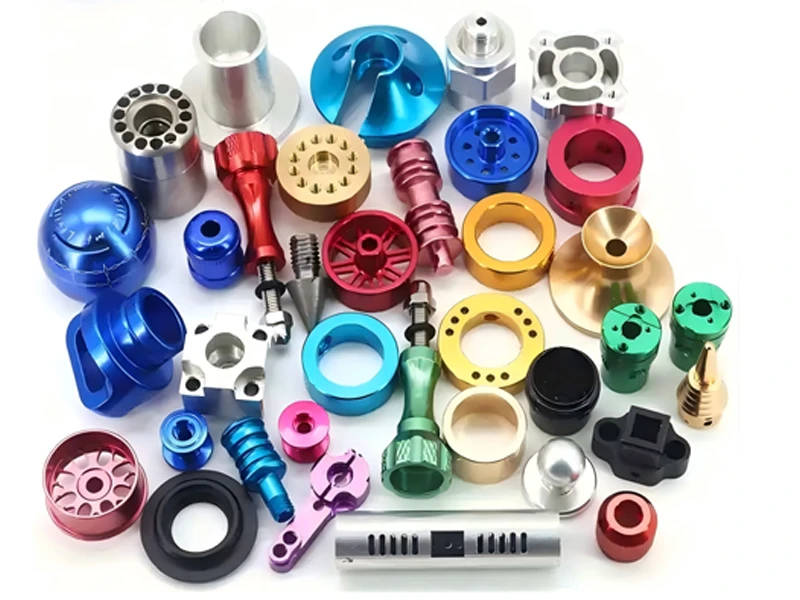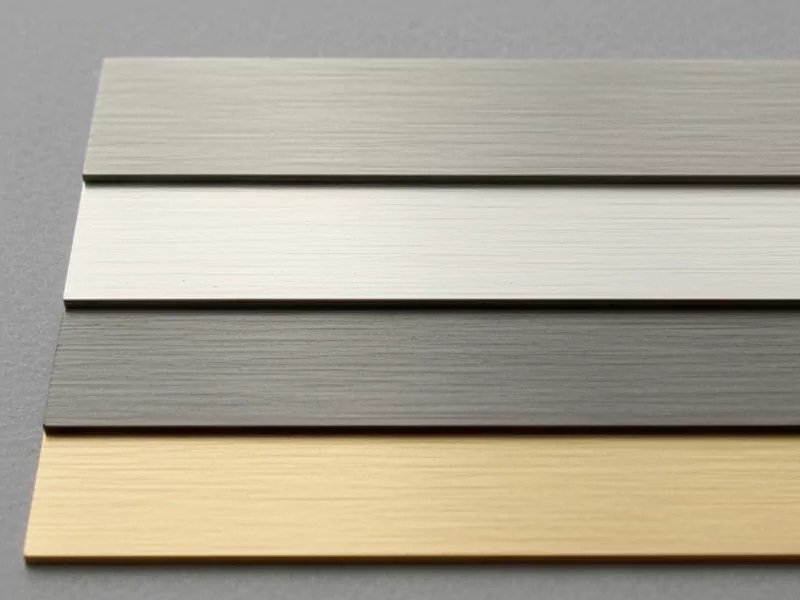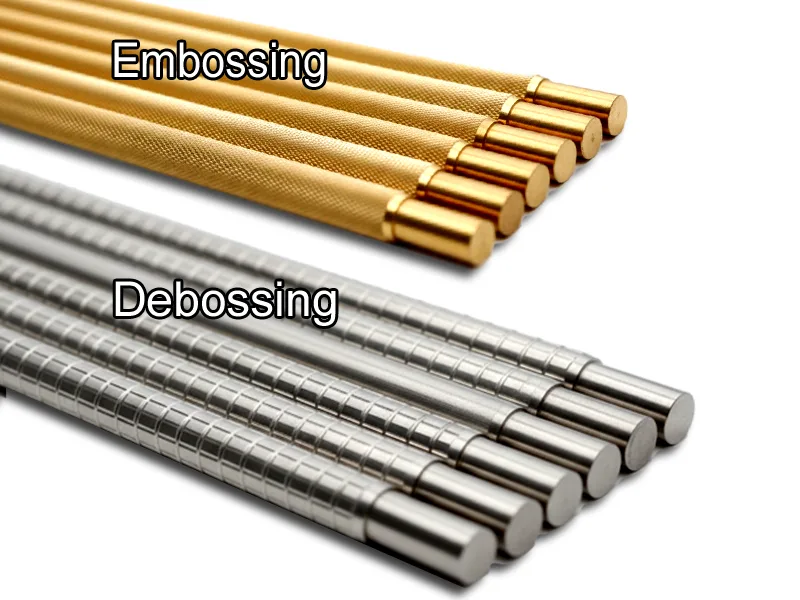Aluminum, a widely used metal material, plays an important role in many fields. In this article, we will delve into the knowledge of aluminum, from its basic properties and alloy classification to processing technology and its application in various industries, to introduce the knowledge of aluminum material comprehensively.
Target readers: beginners, engineers, purchasers, publicists, etc.
What is aluminum?
Aluminum is a silvery-white light metal with the element symbol Al, abbreviated in practice to AL, and an atomic number of 13. Aluminum’s low density and the fact that products made from it are light, about one-third the weight of steel make it useful in a wide range of applications.

Properties of Aluminum
Physical Properties
Low density:
Aluminum has a density of about ≈2.7 g/cm3, which is only ≈1/3 the density of iron. This property makes aluminum alloys more suitable for use in hardware that uses aluminum materials because it makes aluminum very light when measured against other materials.High conductivity:
Its electrical conductivity is about 61% of that of copper; aluminum’s conductivity is second only to silver, copper, and gold.
Thermal conductivity:
Aluminum has a relatively high thermal conductivity of about 200-220 watts/(m-km), and heat is conducted through aluminum very quickly and is dissipated quickly.
Thermal Conductivity:
Aluminum foil is used in cooking and food packaging because of its good thermal conductivity.
High Reflectivity:
With a smooth surface, aluminum reflects more than 90% of visible light and even more infrared light. Because it reflects light and heat, it contributes to energy efficiency and thermal insulation.
Chemical Properties
Activity:
Aluminum is a kind of active metal, located in the order of activity of the metal table before hydrogen, and can react with acid to generate hydrogen gas.
Surface Oxidation:
Aluminum can form a dense film of aluminum oxide on its surface after electrolysis in a chemical solution. This film effectively prevents aluminum from rusting further, thus giving it good corrosion resistance. In general atmospheric conditions, aluminum products can maintain a bright appearance for a long time, without the need for additional anti-corrosion treatment.
Recyclability:
Aluminum is a recyclable metal, and the recycling process consumes low energy, only about 5-6% of primary aluminum production. Recycled aluminum can be remelted, processed, and made into a variety of aluminum products with little or no degradation in performance.
Mechanical Properties
Strength and hardness:
Pure aluminum has relatively low strength and hardness, but this property can be greatly enhanced by alloying.
Toughness:
Aluminum and its alloys exhibit good toughness, allowing them to absorb energy without fracturing easily upon impact.
Machinability:
Aluminum can be processed by a variety of processes, including casting, extrusion, rolling, and forging, and has good processability.
Other Characteristics
Other Characteristics
Non-magnetic:
Aluminum is a non-magnetic material and is not attracted to magnetic fields.
Biocompatibility:
Aluminum and its alloys have good biocompatibility and are non-toxic and harmless to the human body. Ensure the safety of use.
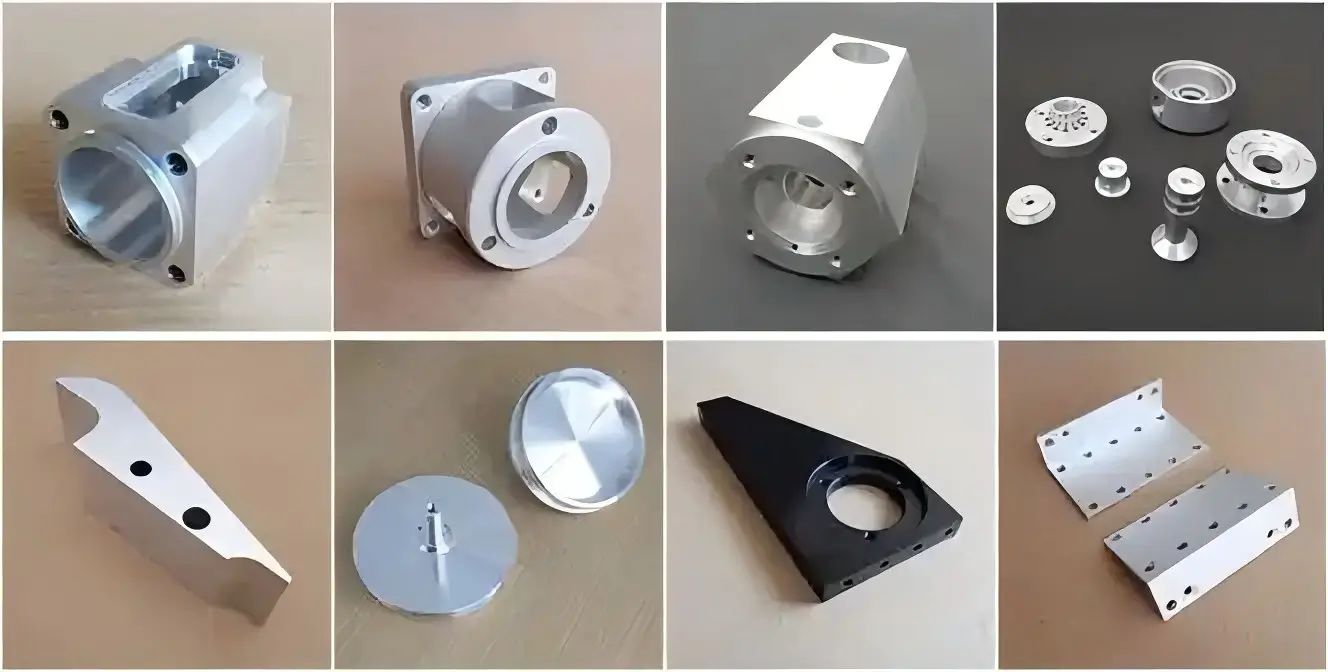
Grades
Aluminum grades are differentiated primarily based on their grades and states.
Presentation:
Aluminum Alloy Grades
1000 Series Aluminum Alloy
Acrylic `1) Structure (one-piece structures) Main components: pure aluminum, aluminum content of more than 99%.
Properties: Good thermal and electrical conductivity, but lower strength.
The application: mainly for the production of wires, aluminum foil, and other products.
2000 Series Aluminum Alloy
Predominant materials: aluminum-copper alloy.
Properties: Increased strength and heat resistance.
Application: Applicable for aerospace field parts manufacturing, such as aircraft fuselage and engine components.
3000 Series Aluminum Alloy
Primary materials: Aluminum-manganese alloy.
Properties: Shall resist corrosion and be Welded Well
Application: Often used in the manufacture of air conditioners, refrigerators, and other products that require high corrosion resistance.
5000 Series Aluminum Alloy
Main materials: magnesium-aluminum alloy.
Features: Good tensile strength and corrosion resistance.
Application: for ships, car bodies, and other products requiring strength and corrosion resistance.
6000 Series Aluminum Alloy
Detail: aluminum-magnesium-silicon alloy.
Features: Good strength, plasticity and corrosion resistance, excellent process performance.
Applications: popularly used for building profiles, automobile parts, electronic equipment, etc.
7000 Series Aluminum Alloy
Key constituents: aluminum-zinc-magnesium-copper alloy.
Features: High strength, good corrosion resistance, and higher cost.
Application: It is used for parts of high-strength structures of aviation and spacecraft, such as airplane wings and fuselage.
Aluminum Alloy State
Fst (free milling state)
Features: No special treatment after machining or casting, only applied to the material that needs further processing.
O state (annealed state)
After the annealing, its hardness and strength are low, but its plasticity and toughness are good, so it is suitable for materials that need to bend and stretch and other processing.
H state (work-hardened state)
Features: The method of cold processing (cold rolling, cold drawing, etc.) makes the material hardened, improves strength and hardness, but reduces plasticity. This makes it suitable for structural parts with high strength requirements.
TA state (heat treatment state)
T4 state (solution treatment + natural ageing)
Casting: Aluminum profiles are extruded from the extruder and then cooled and treated, and do not go into the aging furnace. Low hardness, good deformability, suitable for subsequent bending and other forming machining.
T5 condition (solution treatment + incomplete artificial aging)
Feature: Extrusion post-air cooled quench transfer to aging furnace, heat preservation about 200 degrees 2-3 hours. More hard, have certain deformability, commonly used in curtain wall, the like.
T6 temper (solution heat-treated + artificially aged)
Features: extrusion is water-cooled quenching, quenching and artificial aging, than more than T5, heat preservation time is longer, so than T5 can reach a higher hardness state, suitable for some places whose demand for material hardness is relatively high.
Density
Aluminum has a density of about 2.7 g/cm3
Melting point
Aluminum has a melting point of 660.32°C (1220.58°F)
Boiling point
Aluminum has a boiling point of 2467°C (4472.6°F)
Conduction coefficient
The thermal conductivity of aluminum is about 237 W/(m-K) at room temperature.
Resistivity
The resistivity of aluminum is about 2.65×10-⁸ to 2.82×10-⁸ Ω-m at room temperature.
yield strength
| Material | Yield Strength (MPa) | Yield Strength (ksi) |
| 1100 Aluminum Alloy Annealed (O Temper) | 34 | 5 |
| Aluminum Alloy 1100 Strain Hardened (H14 Temper) | 117 | 17 |
| 2024 Aluminum Alloy Annealed (O Temper) | 75 | 11 |
| Aluminum Alloy 2024 Heat Treated and Aged (T3 Temper) | 345 | 50 |
| Aluminum Alloy 2024 Heat Treated and Aged (T351 Temper) | 325 | 47 |
| 6061 Aluminum Alloy Annealed (O Temper) | 55 | 8 |
| 6061 Aluminum Alloy Heat Treated and Aged (T6 and T651 Tempers) | 276 | 40 |
| 7075 Aluminum Alloy Annealed (O Temper) | 103 | 15 |
| Aluminum Alloy 7075 Heat Treated and Aged (T6 Temper) | 505 | 73 |
| Aluminum Alloy 356.0 As-cast | 124 | 18 |
| Aluminum Alloy 356.0 Heat Treated and Aged (T6 Temper) | 164 | 24 |
Young’s modulus
6000 Series
Young’s modulus: 103 ksi (approx. 70 GPa)
7000 Series
Young’s modulus: 71.7 GPa
2000 Series
Young’s modulus: 72.4 GPa (at 20°C)
Aluminum Alloy Series
Young’s Modulus: 70 GPa
Metal formula
The main component of aluminum is alumina (Al₂O₃-nH₂O). After refining and processing, pure aluminum can be extracted.
Molecular mass of aluminum
The molecular weight (or atomic weight) of aluminum is 26.9815386. In practice, we use 26.98 as a simplified counting value.
Anodizing
Anodizing of aluminum is an electrochemical process in which an electric current and a chemical solution are applied to the surface of aluminum to form a durable oxide layer that enhances its corrosion and wear resistance.
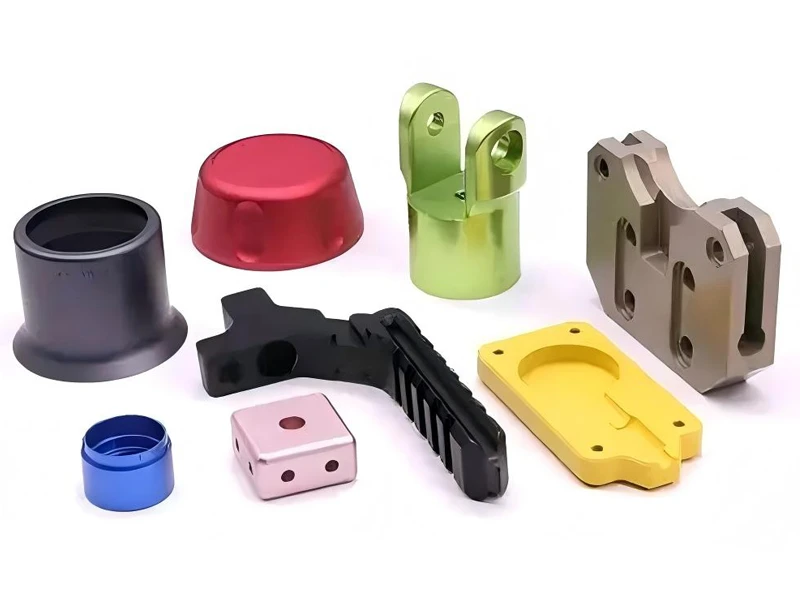
Aluminum vs Stainless Steel
Physical properties
| causality | aluminum | stainless steels |
|---|---|---|
| densities | 2.7 g/cm³ | 7.8 g/cm³ |
| melting point | 660°C | 1400°C – 1530°C |
| thermal conductivity | 237 W/(m·K),high | 15-25 W/(m·K),low |
| conductivity (elec.) | 37.7 million S/m | 1.45 million S/m |
| tensile strength | 70-700 MPa | 515-1275 MPa |
| yield strength | 30-500 MPa | 215-900 MPa |
| durometer | Lower, easy to process | Higher, more difficult to process |
Aluminum vs Titanium
Physical properties
| causality | aluminum | titanium |
|---|---|---|
| densities | 2.7 g/cm³ | 4.5 g/cm³ |
| melting point | 660°C | 1650-1670°C |
| heat conductivity | 210-235 W/m·K | 17-21.9 W/m·K |
| Conductivity (based on copper) | 64% | 3.1% |
| tensile strength | 90-690 MPa | 230-1400 MPa |
| yield strength | 200-600 MPa | 170-480 MPa |
Chemical Properties
Corrosion resistance:
Aluminum: Aluminum forms a dense film of aluminum oxide in air, which provides some corrosion resistance, but is susceptible to corrosion in alkaline environments.
TITANIUM: Titanium has excellent corrosion resistance, especially in marine and acidic environments.
Oxidizability:
Aluminum: Aluminum is prone to forming an oxide layer on its surface, but this oxide layer prevents further corrosion.
Titanium: Titanium has excellent oxidation resistance at high temperatures and is suitable for high-temperature applications


